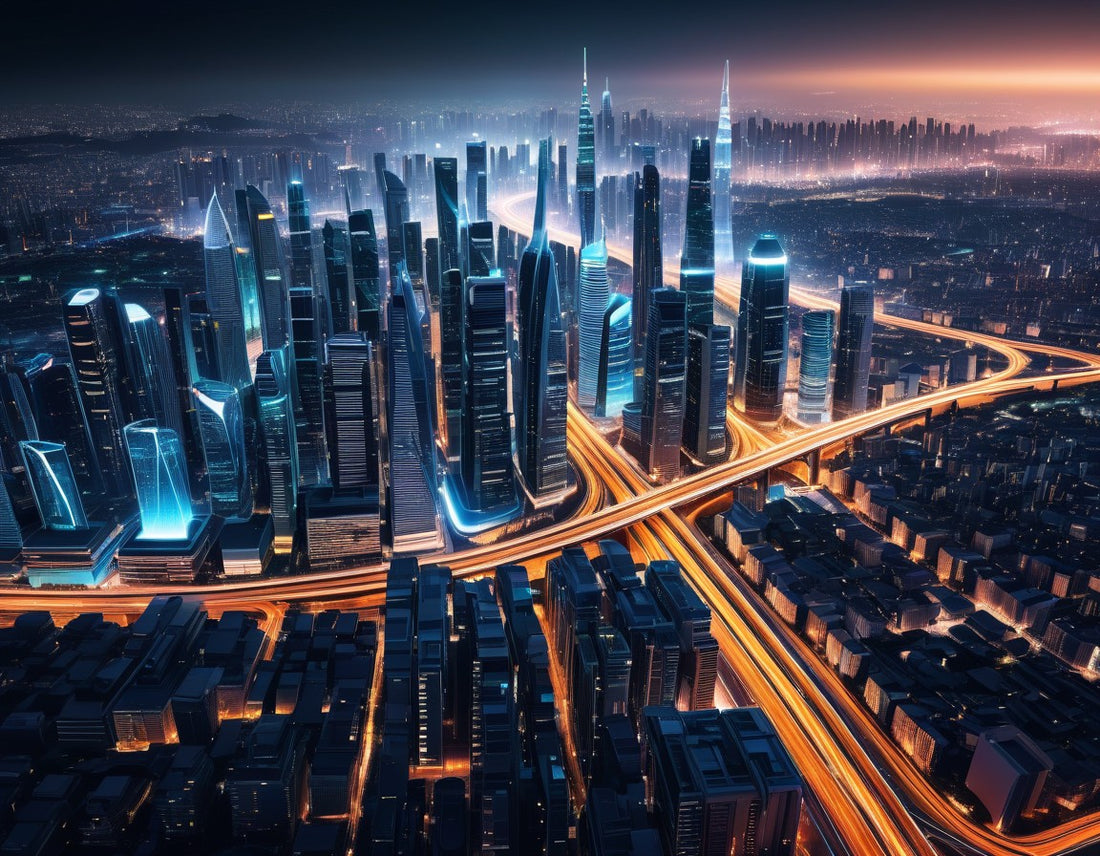
The Future of Fibre Optics: Powering the Tech of Tomorrow
Share
When you think about the future of technology—5G, smart cities, AI, cloud computing—there’s one thing these innovations all have in common: they rely on fibre optic networks. Fibre optics is the unsung hero that powers the ultra-fast, high-capacity connections needed to make these advancements a reality. Let’s dive into how fibre optics is shaping the tech of tomorrow and why it’s more crucial than ever for the infrastructure of the future.
What is Fibre Optics, Anyway?
Fibre optics are thin strands of glass or plastic that transmit data as light. These threads carry massive amounts of data over long distances at incredible speeds—far faster than traditional copper cables. That’s why they are the backbone of the internet and modern telecommunications. Want to know more about how fibre optics work?
Read this article from Cisco (https://www.cisco.com/c/en/us/solutions/enterprise-networks/what-is-fiber-optic.html) for a deep dive into fibre optic technology.
But fibre optics isn’t just about faster downloads or smoother video calls. It's about creating a connected world, capable of supporting the data demands of futuristic technologies.
1. Fibre Optics and 5G: The Perfect Match
5G is set to revolutionize mobile communications, promising lightning-fast internet speeds and low latency. But did you know that 5G networks rely heavily on fibre optic cables?
Why? Because fibre optics can handle the enormous amounts of data 5G generates, ensuring a seamless connection between mobile towers and data centres. As more 5G towers pop up, the need for fibre optic infrastructure skyrockets. That means fibre is the key to unlocking the full potential of 5G, connecting not just people but billions of smart devices in real-time.
Find out more about the 5G-fibre relationship (https://www.ericsson.com/en/reports-and-papers/articles/what-you-need-to-know-about-fiber-optics-and-5g).
2. Smart Cities: Fibre Powering the Cities of the Future
Smart cities aren’t just a futuristic dream—they’re happening now. Cities worldwide are integrating smart technology to manage resources, traffic, energy use, and public safety more efficiently. But none of this works without ultra-fast, reliable networks.
How does fibre fit in?
Fibre optics provide the high bandwidth and speed required to connect the vast network of sensors, cameras, and devices that make a smart city "smart." Think of fibre as the veins that carry data throughout the city, ensuring real-time monitoring and control systems work without a hitch.
Examples of smart cities using fibre optics include Barcelona, which has implemented fibre-powered networks to improve traffic management and public safety. Similarly, Singapore has adopted fibre technology to support its smart nation initiatives, improving water, energy, and waste management systems.
Learn more about Singapore’s Smart Nation (https://www.smartnation.gov.sg/).
3. The Rise of Cloud Computing: Fibre as the Backbone
Cloud computing has already transformed how businesses and individuals store and access data. But as cloud services expand, the demand for faster, more reliable networks increases. Fibre optic cables are essential to meeting these demands, allowing for high-speed data transfer between users and cloud servers.
With tech giants like Amazon Web Services (AWS), Google Cloud, and Microsoft Azure investing heavily in fibre infrastructure, it's clear that fibre optics will continue to be the backbone of the cloud era.
Check out how AWS is leveraging fibre for cloud solutions (https://aws.amazon.com/blogs/networking-and-content-delivery/fiber-networks-the-backbone-of-aws-global-infrastructure/).
4. Fibre Optics and the Internet of Things (IoT)
The Internet of Things (IoT) refers to the network of connected devices—everything from smart fridges and fitness trackers to industrial machines and smart cars. As IoT expands, the sheer volume of data these devices produce can overwhelm traditional networks.
Enter fibre optics. Fibre's ability to transmit vast amounts of data quickly and reliably makes it the ideal choice for supporting the IoT revolution. Whether it’s smart homes or interconnected manufacturing facilities, fibre is the key to keeping all those devices in sync.
Check out how fibre optics and IoT are transforming the home(https://www.smart-home-automation-guide.com/fiber-optic.html).
5. AI and Big Data: Fibre Drives Innovation
Artificial Intelligence (AI) and big data analytics rely on massive amounts of data processed in real-time. Fibre optics provide the infrastructure necessary to support these data-heavy technologies. Without fibre, AI algorithms would struggle to process information quickly enough to offer insights, and big data wouldn’t be able to work its magic efficiently.
Companies like Tesla use fibre optics to power their data processing for autonomous vehicles, while Google uses fibre-driven networks to enhance its AI learning systems. These use cases highlight how fibre is a fundamental component in driving technological innovation forward.
Conclusion: The Future is Fibre, and So is FIBAsource
As industries evolve and technologies become more advanced, the demand for reliable, high-capacity networks will only grow. Fibre optics is the technology that will keep everything connected, efficient, and fast.
At FIBAsource, we’re passionate about providing the tools and equipment that support the engineers and technicians building the future of communication. From fibre testing kits to splicing tools, we’ve got everything you need to keep your installations ahead of the curve. Check out our online store (https://www.fibasource.com) or follow us on LinkedIn (https://www.linkedin.com/company/fibasource-ltd) for more updates and insights into the world of fibre optics.
